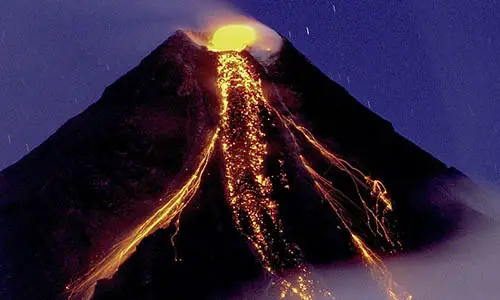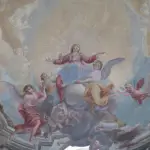The Ash-Spewing Deadly Monster
Earlier on March of 2015, pictures and videos of a 9,330 ft tall monster spewing lava and ashes were all over the media worldwide. Due to this eruption, thousands of people had to be evacuated. The name of this monster is ‘Villarrica’, one of most active composite volcanoes in Chile.
One of the special features of Villarrica volcano eruption was “strombolian explosions”, where intermittent fire explosions of basaltic lava happen from a single crater. Such natural fireworks are caused by sudden release of volcanic gases.
The most famous composite volcanoes in the world include Mount Fuji in Japan, Mount St. Helens and Mount Rainier in Washington, Mt. Etna in Italy, Mount Shasta and Lassen in California, Mount Cotopaxi in Ecuador, Mount Hood in Oregon and Mt. Pinatubo in the Philippines.
Amazing Facts About Composite Volcanoes:
1. Composite cone volcanoes are quite large and spread across between one and ten kilometers. The specific feature of a composite volcano is its conduit system through which magma rises to the earth’s surface. Such volcanoes develop over hundreds of years through the accumulation of lava, ash, and cinders that erupt through the conduit.
2. Composite Volcanoes are also known as ‘Stratovolcanoes’. These are the most common type of volcanoes found in the world. The eruptions of these volcanoes are the most violent and fatal of all other types of volcanoes.
3. Eroded composite cone volcanoes have been named ‘Calderas’. They actually become enormous, steep, basin-shaped depressions formed due to accumulation of volcanic vents. An example of such a Crater Lake is found in Oregon. According to Geologists, the lake was once a massive volcano called Mt. Mazama. After a series of explosions about 6,800 years ago, the top section of the volcano’s receded and became the lake it is today.
4. One of the deadliest composite volcanic eruptions in earlier times happened in 1792, when the Mt. Unzen erupted in Japan. It left the most catastrophic impact in all of Japan’s history. The eruption triggered a massive landslide and tsunami, which was responsible for most of the casualties.
5. Two famous composite volcanoes, Krakatoa, which is best known for its deadly eruption in 1883 and Vesuvius, which was famous for destroying the towns Pompeii and Herculaneum in 79 AD. Both the eruptions took away thousands of people’s lives.
6. Eruptions from composite volcanoes may rise up to 8,000 feet above their bases. Most composite volcanoes are found in chains, which are separated by several kilometers. Numerous such composite volcano chains exist on earth. The most notable among them the chains around the Pacific Rim, and famous as the “Rim of Fire”. There are actually 452 composite volcanoes in the Pacific Rim.
7. The term “strombolian” is derived from the volcano Stromboli, which is located in Aeolian Islands, north of Sicily. Stromboli has been continuously erupting for about past 2,400 years!
8. Five major composite volcanoes are located in Washington, which are Mount Adams, Mount Baker, Glacier Peak, Mount St. Helens and Mount Rainier. Along with these volcanoes, Mount Hood to the Oregon south forms a part of the Cascade Range.
9. In total there are 13 major composite volcanic centers in the U.S., and all of them are part of the Cascade Range. These volcanic centers are major concerns for posing environmental hazards. In the past 12,000 years, these volcanoes have erupted more than 200 occasions and generated Tephra (fragmented material), lava flows, debris avalanches and volcanic debris flows.
10. In 79 AD, the eruption of Mount Vesuvius killed thousands of people in the Pompeii and Herculaneum in Rome. Later archaeologists discovered hollows in the volcanic ash where the victims’ bodies fell and gradually decayed. For many years, the assumption was that lava killed the people of Pompeii and Herculaneum until scientists revealed the real reason.
11. The 1997 Hollywood flick ‘Dante’s Peak’ was actually inspired by the 1980 eruption of the Mount St. Helen in Washington. It is said to be one of the most accurately portrayed scientific disaster movies.











May 26, 2021 3:12 am
hi this is…